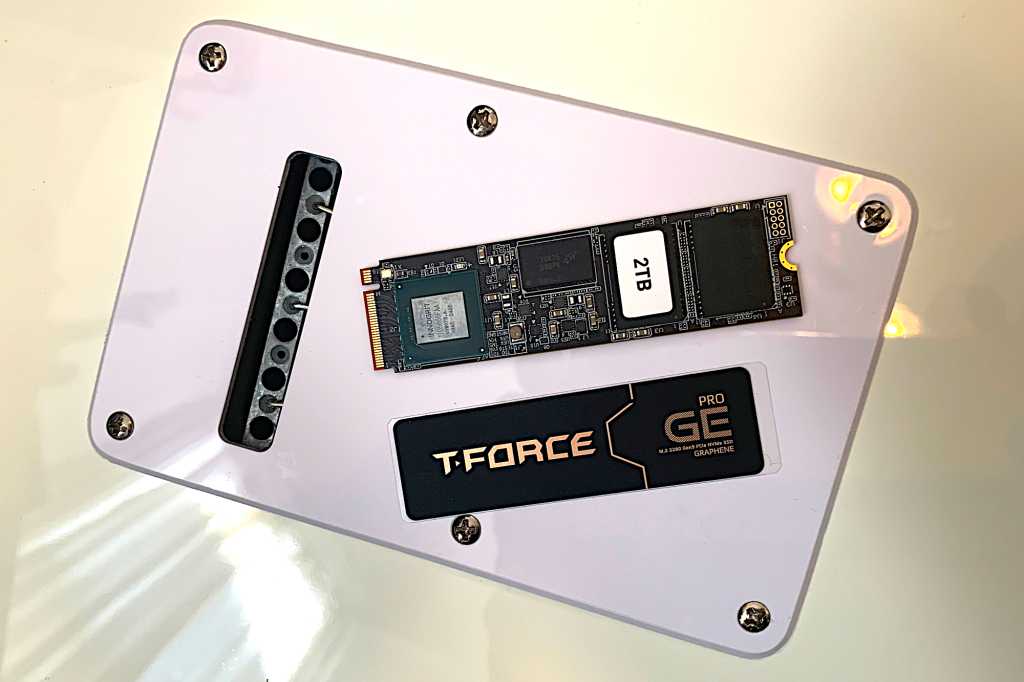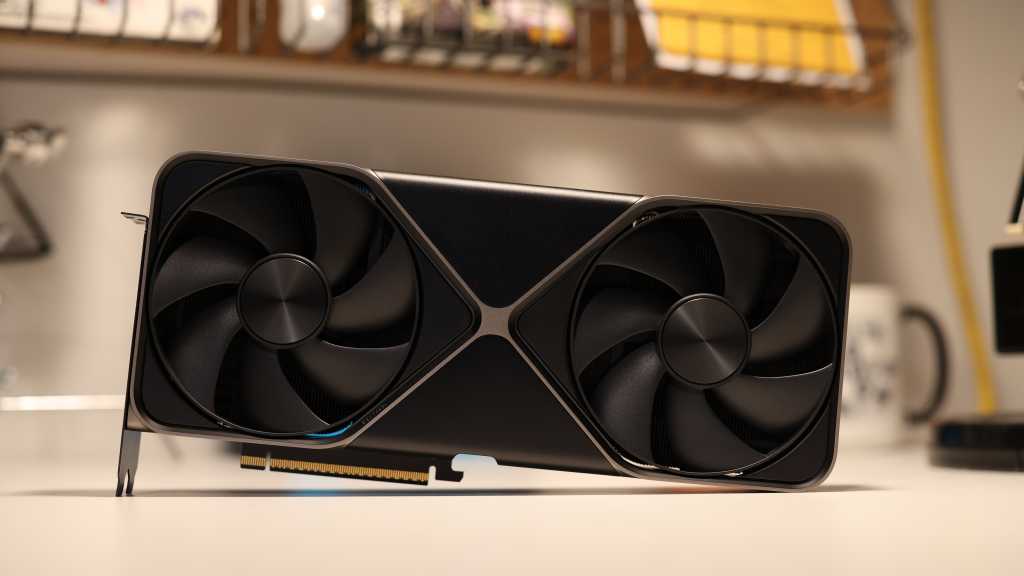The Teamgroup GE Pro PCIe 5.0 SSD promises blistering speeds, but does it deliver? In this review, we’ll delve into its performance, features, and value proposition to determine if it’s worth your investment.
The GE Pro boasts impressive specifications, including PCIe 5.0 x4 connectivity, a robust 700TBW endurance rating, and a 5-year warranty. While these features are appealing, the real question lies in its real-world performance.
Features and Design
The Teamgroup GE Pro is a standard 2280 M.2 NVMe SSD, meaning it’s compatible with most modern motherboards. It utilizes an InnoGrit IG5666 controller and 232-layer TLC NAND, coupled with 512MB of DRAM per 1TB of storage. Up to 33% of the NAND can function as secondary cache, contributing to sustained performance. A notable inclusion is the attractive graphene heat spreader, designed to mitigate thermal throttling during intensive workloads.
 alt text: Close-up of the Teamgroup GE Pro SSD with its graphene heat spreader.
alt text: Close-up of the Teamgroup GE Pro SSD with its graphene heat spreader.
Pricing and Availability
The GE Pro is available in 2TB and 4TB capacities, priced at $260 and $450, respectively. A 1TB model is expected, with an estimated retail price of around $150.
Performance Analysis
While the GE Pro delivers good PCIe 5.0 speeds, it doesn’t quite reach the top of the charts. In our tests, it ranked 13th overall, even falling behind some high-performing PCIe 4.0 SSDs. Among its PCIe 5.0 peers, it consistently placed in the middle of the pack.
One area of concern is the single-queue read performance, which is crucial for everyday Windows tasks. The GE Pro’s numbers in this area were notably lower than the competition.
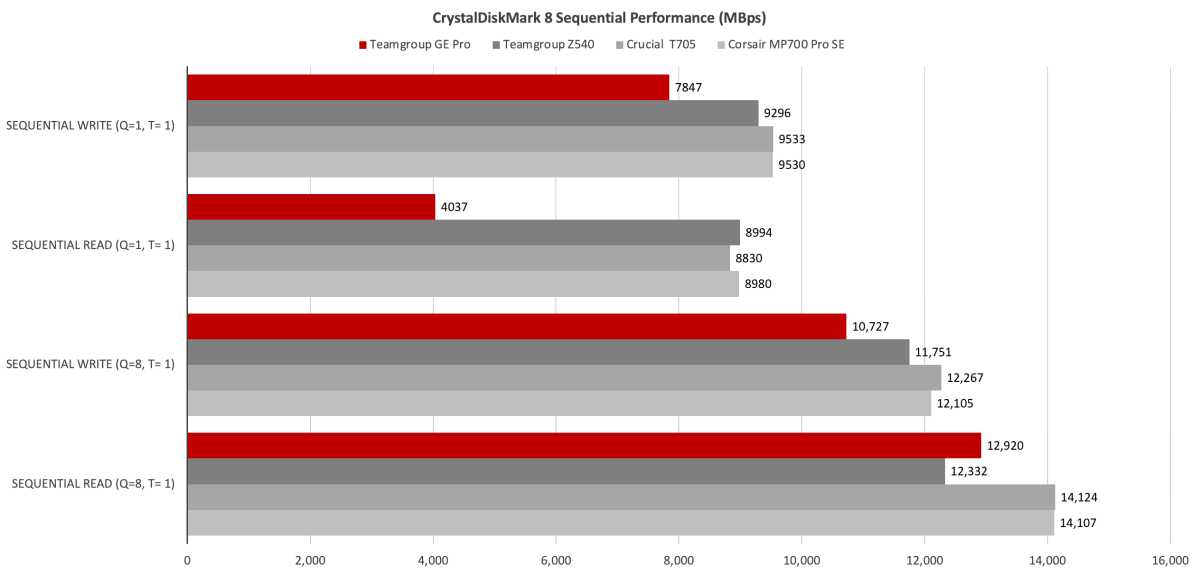 alt text: Bar graph comparing the single-queue read performance of various SSDs. The Teamgroup GE Pro shows lower performance than competitors.
alt text: Bar graph comparing the single-queue read performance of various SSDs. The Teamgroup GE Pro shows lower performance than competitors.
In single-queue random tests, the GE Pro performed adequately, but it lagged behind in multi-queue 4K tests. This suggests that performance may suffer under heavier, multi-threaded workloads.
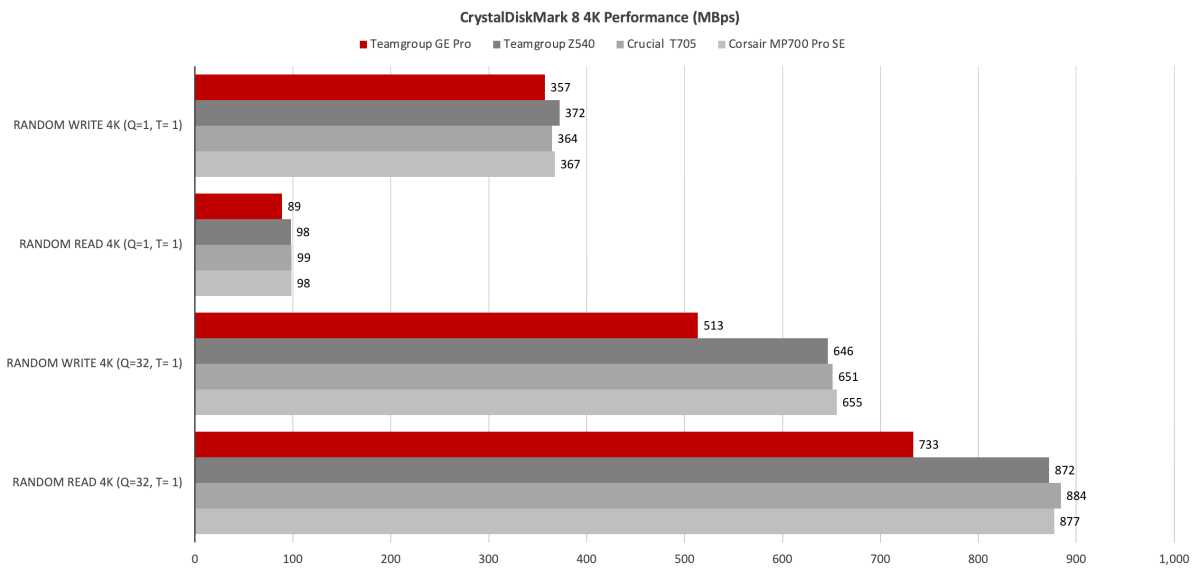 alt text: Bar graph comparing the random read and write performance of various SSDs. The Teamgroup GE Pro shows mixed results.
alt text: Bar graph comparing the random read and write performance of various SSDs. The Teamgroup GE Pro shows mixed results.
Our 48GB transfer tests, which simulate real-world file transfers, further highlighted the GE Pro’s middling performance. While not drastically slow, it was noticeably slower than some PCIe 4.0 drives with Host Memory Buffer (HMB) technology.
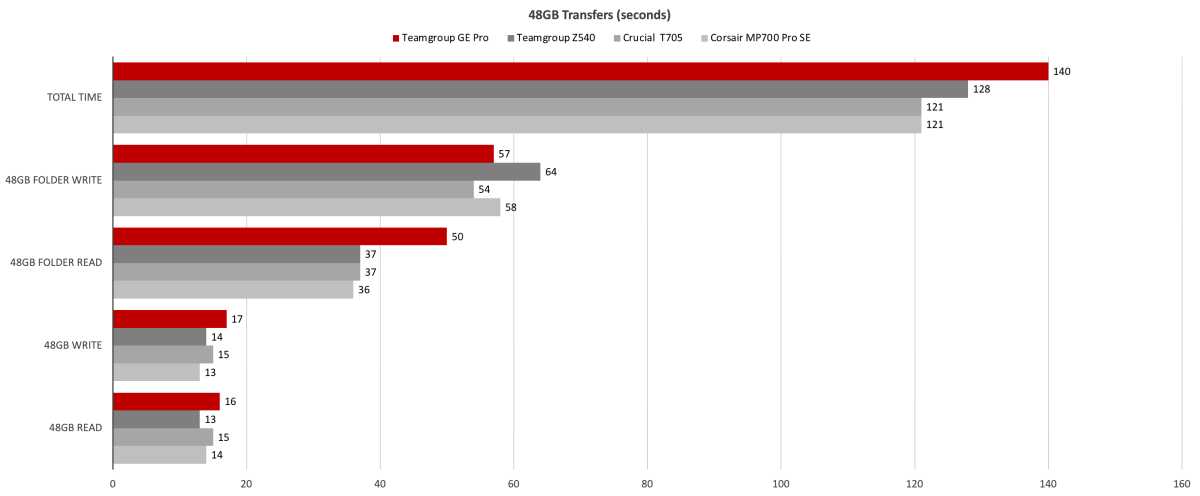 alt text: Bar graph comparing 48GB transfer speeds of various SSDs. The Teamgroup GE Pro shows competitive but not leading performance.
alt text: Bar graph comparing 48GB transfer speeds of various SSDs. The Teamgroup GE Pro shows competitive but not leading performance.
Similarly, the 450GB write test showed the GE Pro falling behind its competitors, including Teamgroup’s own Z540.
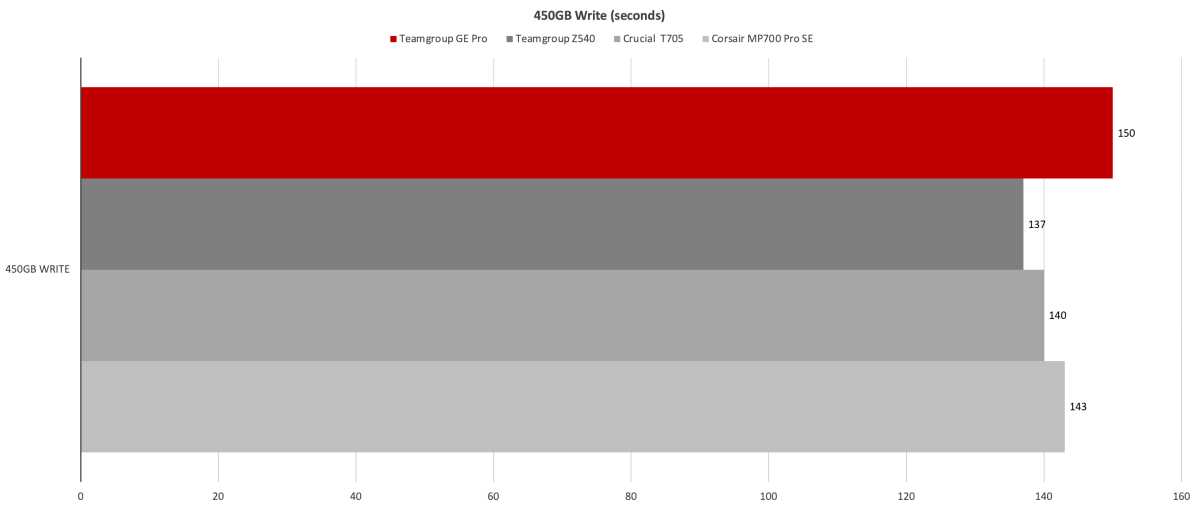 alt text: Bar graph comparing 450GB write speeds of various SSDs. The Teamgroup GE Pro shows slower performance than competitors, including the Teamgroup Z540.
alt text: Bar graph comparing 450GB write speeds of various SSDs. The Teamgroup GE Pro shows slower performance than competitors, including the Teamgroup Z540.
Conclusion
The Teamgroup GE Pro is a good PCIe 5.0 SSD, offering decent performance, a generous warranty, and a helpful heat spreader. However, its performance doesn’t justify its premium price compared to faster PCIe 5.0 alternatives and even some high-end PCIe 4.0 options. If you can find it at a discount, it’s a worthwhile consideration. However, at its current price, other SSDs offer better value and performance.



